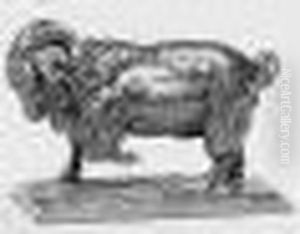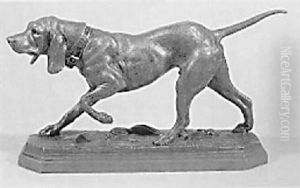Alfred Barye Paintings
Alfred Barye, born Alfred-Émile-Léopold Barye, was a French sculptor and the son of the famed animalier (animal sculptor) Antoine-Louis Barye. Born on January 21, 1839, in Paris, France, Alfred Barye was introduced to the world of art and sculpture at a young age, heavily influenced by his father’s work and reputation.
While his father, Antoine-Louis, is often more widely recognized, Alfred Barye made a name for himself in the realm of sculpture. He worked primarily in bronze and was known for his fine detailing and realistic portrayal of animals. Barye learned the art of sculpture under his father's tutelage and continued the family tradition of capturing the beauty and dynamism of wildlife in his works. He also studied under the esteemed French sculptor Auguste Clésinger, who had a significant influence on his artistic development.
Though living in the shadow of his father's formidable legacy, Alfred Barye managed to carve out his own artistic path. He exhibited his works at the Paris Salon, where he received acclaim for his sculptures. His works often depicted animals in combat or at rest, showcasing a keen observation of their anatomy and behavior. Barye's sculptures were characterized by a fidelity to the natural world and a delicate treatment of surfaces, which won him a dedicated following.
Unfortunately, Alfred Barye's life was cut short, and he died at the age of 43 on February 28, 1882, in Paris. Despite his relatively brief career, his contributions to the field of animal sculpture continued the Barye legacy and remain appreciated by art historians and collectors. His works are held in various collections and museums, serving as a testament to his talent and skill as an animalier.

